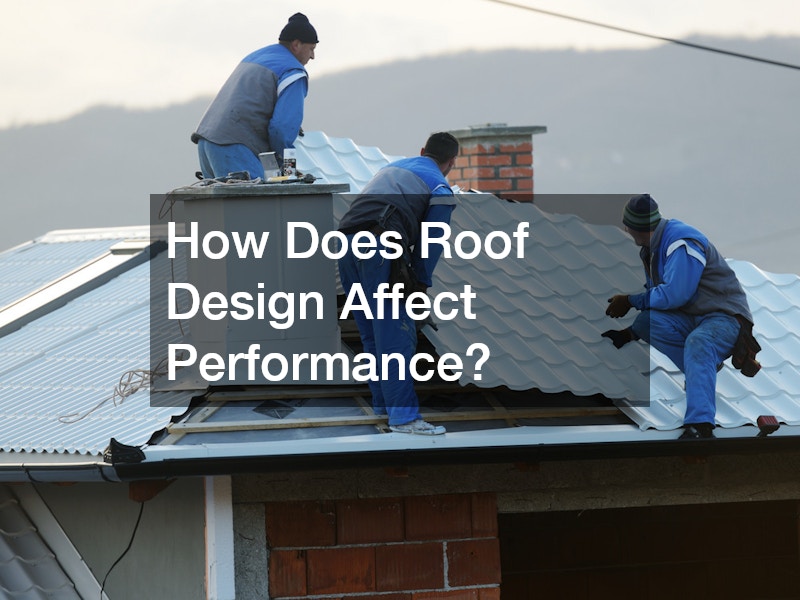

Creating a good roof involves much more than simply choosing a pleasing design; it requires a comprehensive understanding of various elements that contribute to a roof’s quality, durability, and functionality. From selecting the right materials to ensuring proper installation and regular maintenance, every aspect plays a crucial role in determining the roof’s lifespan and performance. For instance, the choice of materials can impact not only the roof’s resilience but also its environmental sustainability and energy efficiency. Homeowners should also consider how local climate conditions can affect their roofing decisions, influencing everything from design choices to weatherproofing techniques.
Moreover, hiring qualified professionals, such as a local roofer or a storm damage roofing service, is critical to achieving the desired results. These experts can provide invaluable insights into the best practices for installation and maintenance, ensuring that the roof meets industry standards and performs optimally over time. In this article, we will explore ten key elements that contribute to creating a good roof, emphasizing the importance of informed decision-making throughout the process. By understanding these components, homeowners can ensure they invest in a roofing system that not only protects their home but also enhances its overall value.
1. What Materials Constitute a Solid Roof?
The foundation of a good roof begins with the materials and building supplies used. Choosing the right materials ensures durability and longevity while also factoring in environmental impact and cost-effectiveness.
- Choosing Durable Roofing Materials: Different materials are available depending on the climate and the style of the home. Asphalt shingles, metal, and tile are some popular options, each with unique benefits. Asphalt shingles are cost-effective and widely used, while metal offers a longer lifespan. Tile roofs provide aesthetic appeal and can last for decades, though they are heavier and more expensive.
- Environmental Impact and Sustainability: In recent years, the focus on sustainable materials has grown. Recycled metal roofing and eco-friendly tiles help reduce the environmental footprint of the roofing process. Custom home builders often work with clients to incorporate these sustainable options into their designs, emphasizing the use of high-quality building supplies.
- Cost vs. Longevity: While more affordable options like asphalt may seem appealing, it’s important to weigh the upfront cost against the long-term benefits. Investing in higher-quality materials can save on future residential roof repair costs and ensure a good roof that lasts longer.
2. How Does Roof Design Affect Performance?

Roof design plays a critical role in performance. The shape and structure of the roof can determine how well it stands up to weather and environmental conditions.
- Understanding Different Roof Shapes: Roofs come in various shapes, including gabled, flat, and hipped designs. Each has its own set of advantages. Gabled roofs, for example, are great for shedding water and snow, while flat roofs are more common in modern designs and commercial buildings.
- Design Considerations for Climate: The local climate is a major consideration when choosing a roof design. For areas with heavy snow, steeply pitched roofs prevent accumulation. In warmer, wetter climates, designs with better ventilation and drainage are essential to prevent damage.
- Architectural Integration: A good roof should blend seamlessly with the home’s architectural style. Working with custom home builders can ensure the roof enhances the overall design while still performing optimally.
3. What Are the Best Practices for Roof Installation?
Proper installation is critical to ensuring a good roof. Even the highest-quality materials can fail if not installed correctly.
- Hiring Qualified Professionals: The key to a successful roofing installation is hiring a reputable, local roofer with experience and expertise. Qualified professionals will follow manufacturer guidelines and local building codes, which is critical for warranty and insurance purposes.
- Step-by-Step Installation Guide: Installation typically begins with preparing the roof deck, followed by laying down waterproof barriers and underlayment. Then, the roofing materials are applied, ensuring proper alignment and attachment. Edge treatments and flashing are essential to prevent leaks. Additionally, a storm damage roofing service can help with installation if your roof has experienced severe weather impacts.
- Common Mistakes to Avoid: Poor flashing installation, incorrect nailing techniques, or improper ventilation can lead to early roof failure. By working with a professional storm damage roofing service, you can avoid these common pitfalls and ensure a good roof that lasts.
4. How Often Should a Roof Be Maintained?
Regular maintenance is essential for extending the lifespan of a roof. Routine checks and minor repairs can prevent more serious and expensive damage.
- Regular Maintenance Schedule: A typical maintenance schedule includes inspecting the roof twice a year, especially after major storms. Small issues, such as loose shingles or clogged gutters, should be addressed promptly.
- Identifying Signs of Damage: Cracked or missing shingles, sagging areas, and leaks are all signs that a roof needs attention. Often, damage starts small but can lead to bigger issues if ignored. Foundation elevation and location of the home play a big role in the wear and tear of a roof.
- Essential Maintenance Tips: Keep gutters clean to prevent water damage. Working with a gutter repair specialist can ensure proper drainage and reduce stress on the roof. Additionally, remove debris, such as leaves and branches, that can trap moisture and cause rot.
5. What Are the Most Effective Weatherproofing Techniques?

Weatherproofing is essential to protect a roof from the elements. A good roof should be equipped to handle rain, wind, snow, and even extreme heat.
- Waterproofing Solutions: One of the most effective weatherproofing techniques is the use of membrane waterproofing systems. These membranes act as barriers to water, protecting the roof deck from moisture infiltration.
- Snow and Ice Management: In colder climates, snow and ice can cause significant damage. Heat cables and ice shields can prevent the buildup of ice dams, which cause leaks and structural issues.
- Wind and Storm Resistance: High winds can rip off shingles or even blow off entire sections of a roof. A storm damage roofing service can install impact-resistant materials and reinforce vulnerable areas, ensuring your roof is storm-ready.
6. How Important is Roof Ventilation?
Ventilation is an often-overlooked aspect of a good roof. Proper ventilation helps regulate temperature, moisture levels, and air quality in the home.
- Types of Roof Ventilation Systems: Roof ventilation typically comes in the form of ridge vents, soffit vents, or gable vents. Ridge vents are the most common and are placed along the top of the roof, while soffit vents allow air to enter the attic from below.
- Impact of Ventilation on Roof Longevity: Proper ventilation prevents the buildup of heat and moisture in the attic, which can lead to roof damage. Over time, without proper ventilation, the roof may warp, shingles may deteriorate, and mold may grow.
- Ventilation Installation and Maintenance: Ensure your ventilation system is installed properly by a local roofer, and check regularly for blockages. It’s also important to confirm that your home has a balance of intake and exhaust vents.
7. What Role Does Insulation Play in Roofing?
Insulation works hand-in-hand with ventilation to create a good roof. It not only keeps your home energy efficient but also protects the roof from temperature extremes.
- Different Types of Roof Insulation: There are several types of roof insulation, including fiberglass batts, spray foam, and rigid foam boards. Each has its benefits, with spray foam offering superior sealing abilities and rigid foam providing added structural support.
- Energy Efficiency Benefits: A well-insulated roof can significantly reduce heating and cooling costs by preventing heat from escaping in winter and keeping the home cool in summer. This also reduces the strain on HVAC systems.
- Cost-Effectiveness of Insulation: While the initial cost of insulation may seem high, the savings in energy bills and reduced wear on the roof will pay off in the long run. Additionally, good insulation can increase the overall lifespan of the roof by preventing thermal stress.
8. How Do You Ensure the Safety of a Roof?

Safety is an important consideration when constructing or maintaining a good roof. Both installation and regular inspections require careful attention to safety procedures.
- Safety Precautions During Installation: Roofing is a dangerous job, with risks including falls, burns from hot materials, and electrical hazards. Make sure to hire professionals who follow proper safety protocols, including harness use and protective equipment.
- Implementing Safety Features: Incorporating safety features such as non-slip surfaces, secure access points, and guardrails can make future maintenance tasks safer.
- Regular Safety Inspections: Having regular inspections by a professional, especially after storms or severe weather events, can help identify potential risks before they become major issues.
9. What Are the Signs You Need a Roof Replacement?
Over time, even the best-maintained roofs will need to be replaced. Knowing the signs of when a replacement is necessary can prevent further damage to the home.
- Recognizing Wear and Tear: Common signs that a roof needs replacing include curling shingles, bald spots where granules have worn off, and leaks inside the home. If these issues are widespread, a replacement is often the best solution.
- Evaluating Repair vs. Replacement: Minor damage, such as a few missing shingles, may only require a simple residential roof repair. However, widespread damage or leaks into the attic may signal a more serious issue requiring full replacement.
- Planning for Roof Replacement: If you notice signs that your roof is nearing the end of its lifespan, begin planning for a replacement. Work with a local roofer to evaluate options and ensure the new roof will be an improvement on the old one.
10. How Can You Maximize the Longevity of Your Roof?

Once your roof is installed, it’s important to adopt preventive measures to ensure it lasts as long as possible.
- Adopting Preventive Measures: Simple actions, such as cleaning the gutters, trimming overhanging trees, and checking for leaks, can go a long way in prolonging the life of your roof. Hiring a window installation company to ensure your windows are properly sealed can also aid in preventing moisture from affecting the roof.
- Periodic Inspections and Repairs: Schedule regular inspections to catch small issues before they become major problems. Timely residential repair can extend the lifespan of your roof by addressing wear and tear early on.
- Investing in Quality Over Time: A good roof is an investment. Choosing the right materials, design, and installation can help avoid expensive repairs or premature replacement. Working with qualified professionals, such as house painters for external aesthetics or custom home builders for integrated design, will ensure all aspects of your home are well-maintained.
Creating a good roof requires careful consideration of various elements, from materials and design to installation and maintenance. Each factor plays a crucial role in ensuring the roof performs effectively and lasts as long as possible. By understanding the importance of these elements and making informed decisions, homeowners can enjoy a durable, efficient roofing system that protects their homes for years to come. Investing in quality and working with experienced professionals, such as local roofers and storm damage roofing services, will ensure your roof remains a solid foundation for your home.
By investing time, effort, and resources into each of these elements, homeowners can secure a reliable and long-lasting roofing solution. This proactive approach not only protects their home from the elements but also enhances its overall energy efficiency and aesthetic appeal. Additionally, a well-maintained roof can increase property value, making it an essential consideration for any homeowner. Regular inspections and timely repairs can prevent minor issues from escalating into significant problems, ensuring that the roof remains in optimal condition. Ultimately, a proper roof is a wise investment in a home’s future, providing peace of mind and security for years to come.



